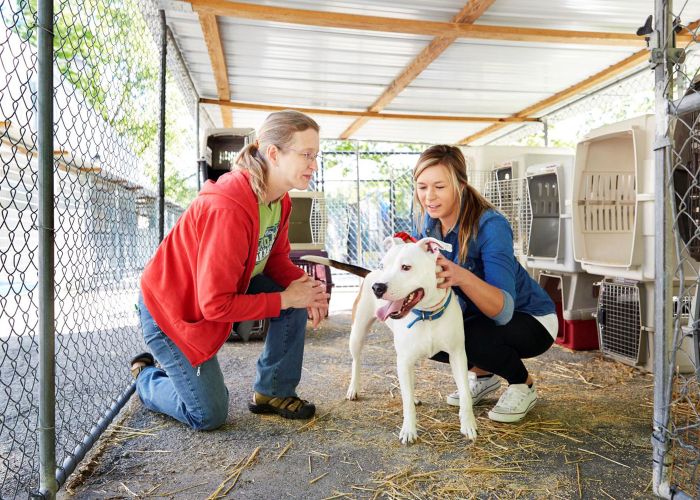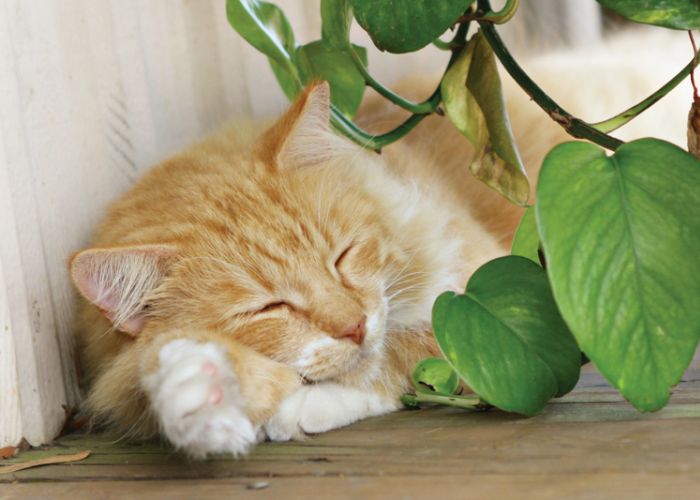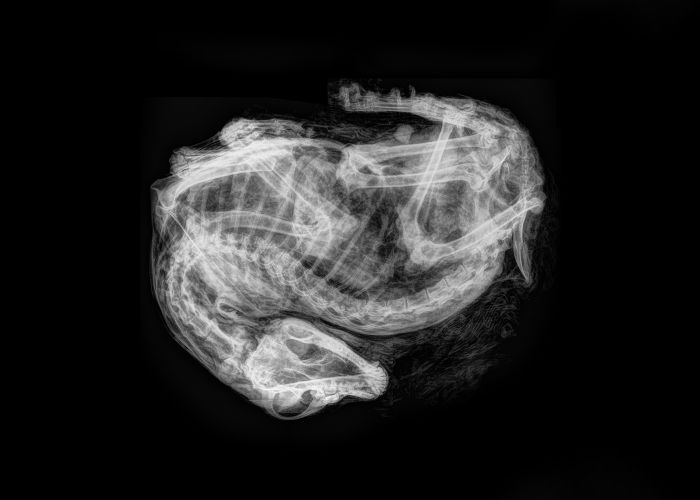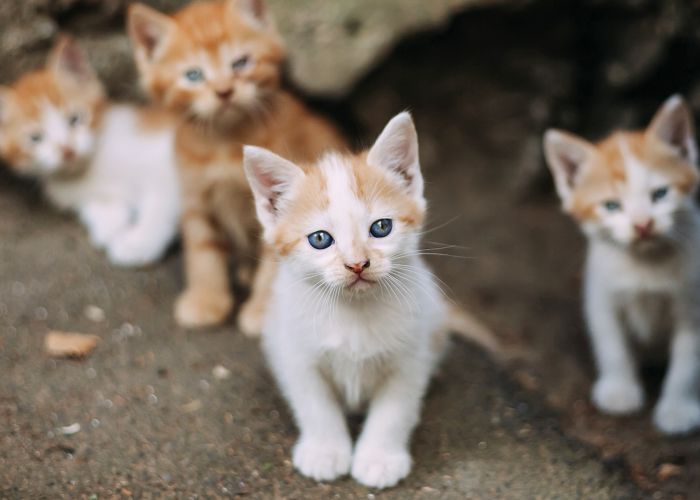All Pawgwarts houses are equal
Shelter director explains the power of magical thinking
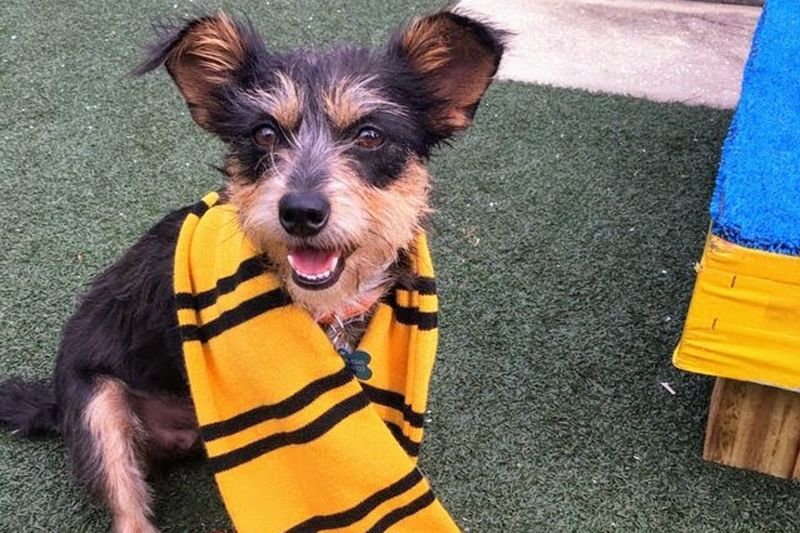
When the Pet Alliance of Greater Orlando in Florida started “sorting” homeless dogs and cats by “Pawgwarts” house, rather than by breed, it led to an explosion of media coverage, shelter visitors and website traffic. But the Harry Potter-inspired idea isn’t just about sorting hats and spells: It’s a way to get people to stop and rethink what “breed” really means.
In fact, staffers fine-tuned the seemingly casual initiative for 10 months, under strict secrecy, before launching Pawgwarts house kennels in September. (For those living under a dog bed, the Hogwarts School of Witchcraft and Wizardry’s four houses are loyal Hufflepuff, clever Ravenclaw, ambitious Slytherin and brave Gryffindor).
Executive director Stephen Bardy says that since then, more than 10,000 people have sorted their pets into a house using Pet Alliance’s online quiz, conjured up by the shelter’s behaviorist. Read on to Alohomora* Bardy’s edited answers to writer Bethany Wynn Adams’ most Incendio** questions, no Veritaserum*** needed.
*the unlocking spell
**the burning spell
***truth serum—seriously, have you been living under a litter box?
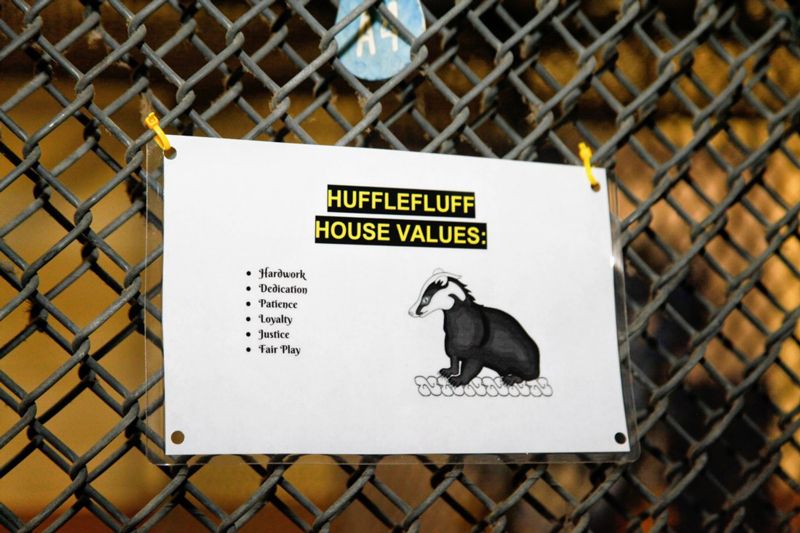
You became executive director at the Pet Alliance of Greater Orlando in May 2016. At what point did Pet Alliance stop labeling dogs by perceived breed?
Twenty percent of our dogs were surrendered due to breed-related issues and housing issues. So in January, we launched our Pet Apartment Registry to work with apartment complexes to get them to end their breed and size restrictions. In May 2017, we stopped putting breeds on our kennel cards, and then in September, we launched the Harry Potter kennels. So it’s been a yearlong plan of, “OK, how are we going to start this conversation both locally and nationally?” to get people to realize [how breed labels and breed-related housing restrictions affect shelter intake].
When I started, we were labeling dogs by breed, and we were at about a 91-percent live-release rate, and we’re at about 95-and-a-half percent now. We are very fortunate that our average dog is only with us eight days, regardless of perceived breed, but we know that our square head dogs stay with us longer. So what were we going to do to reduce that time, and what were we going to do to prevent them from coming in in the first place?

So would you say Pet Alliance has more square head dogs than other types of dogs?
Yes and no. Recently we’ve actually overhauled our social media, as well. I think as an industry [we do people] a disservice because we use our social media to primarily focus on harder-to-place dogs. And I get it when resources are limited, but if the only image I’m ever sending out is of a square head or a block-head dog, then people are only going to think that’s what I have. They never see our schnauzers, our Pomeranians, our Chihuahuas, our Labradors, our goldendoodles. They never see any of those dogs because they’re here for about 24 hours. So we now we work with the local TV station every Friday. We take three photos [of different dog types] and promote all three. We’re trying to change the face of what people see as a shelter dog.
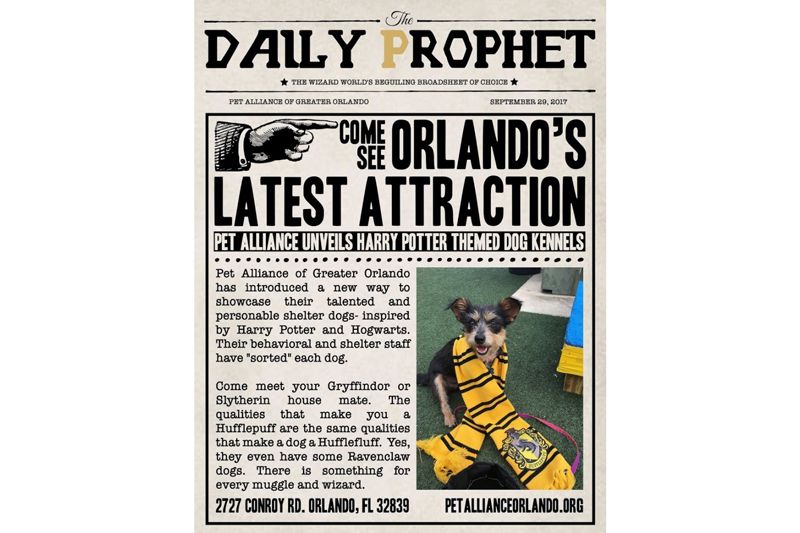
It sounds like you’ve been working on the Pawgwarts house initiative for a while. Did you have any help from marketing or design agencies?
We’ve been working on this Harry Potter thing for 10 months, and we kept such a tight lid on it because we were so afraid somebody would realize what a great idea it was and beat us to the punch! We used royalty-free images and then had a designer create our own images and the house crest logos in our kennels. We have some volunteers that work for a "major theme park" that helped us out, but it is not endorsed by the theme park. Their employees helped with the branding, the imaging, making sure that everything was on point. They printed all of the banners at a local banner company for free. We paid zero dollars for this. It literally was just an investment of time and ideas, and we would love to see other shelters pick this up. We want to see a national conversation. We want people to stop mislabeling dog breeds, because it’s still the leading question everybody asks: “What kind of dog is it?” And our response now is, “What do you think it is?” Then we lead into, “What are you looking for in a dog?”
What we’ve found is, if you’re a fan of Harry Potter, you get the house concept without any explanation. You know yourself as a Hufflepuff, so you know what those qualities are. Seeing it on a kennel card, you get it. It’s really allowing us to engage the adopter.
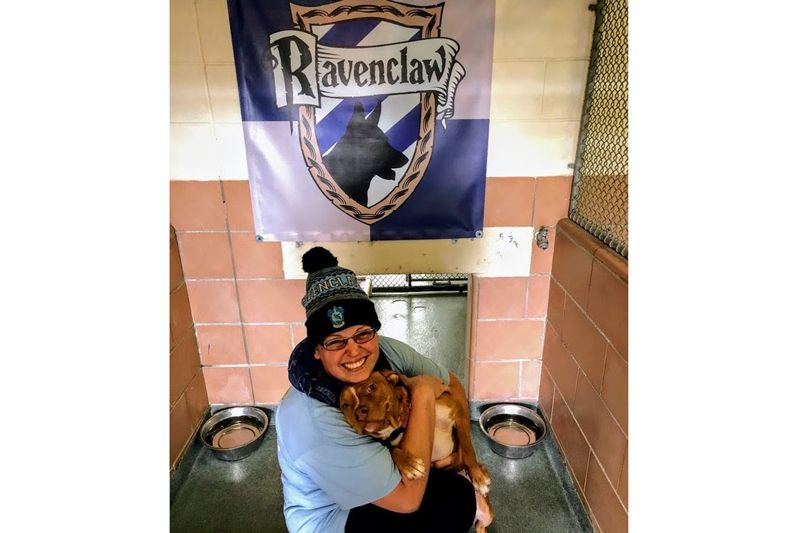
I took your sorting quiz, and as I always suspected, my dog is a Hufflepuff. How did you come up with the quiz? Is it as accurate as I think it is?
We are very fortunate that our behaviorist Diane Anderson and our shelter manager Rachel Klaren are both over-the-top Harry Potter fans. We literally do sort every dog that goes into one of those kennels, and it’s based on their behavior, and then we have some toys [in the play yard], and whichever toy they gravitate toward more is their house. Diane selected the toys based on her knowledge of Harry Potter and her knowledge of dogs, and then she designed the seven quiz questions.
It’s got some accuracy, but for us it’s a way to get people to talk about dogs’ personalities and not their perceived breed. With the Harry Potter stuff, it really allows us to entrench that conversation and talk to people about what they’re looking for.
I will say for one of my dogs, the quiz was very accurate. The other dog … I do believe my schnauzer is straight-up Slytherin, and no amount of testing will convince me that he’s a Hufflepuff. He’s just not.
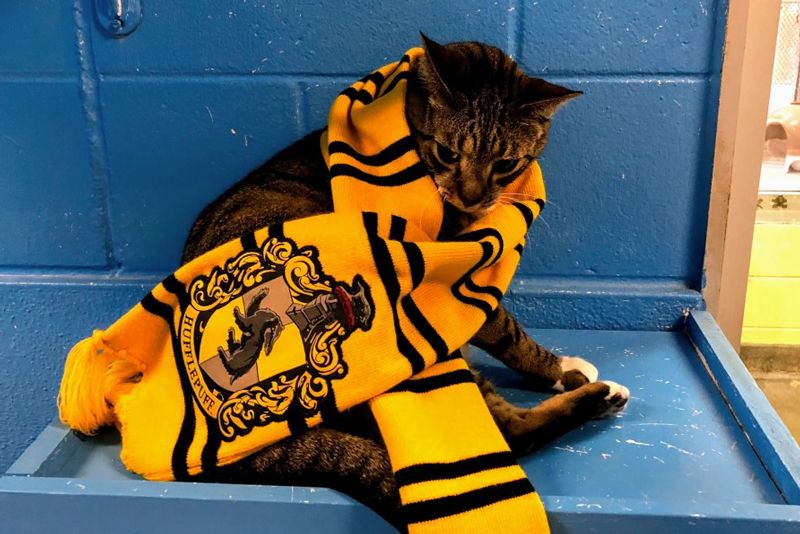
Speaking of Slytherins, was there any worry that people wouldn’t adopt Slytherin dogs?
We did have some conversations about that. But Diane is a very out, loud and proud Slytherin, and she made sure that adopters were all aware that Slytherins are leaders, they’re cunning, intelligent, and we’re factoring in all of those things.
More dogs have been sorted as Hufflepuffs, followed by a pretty even split between Gryffindor/Slytherin, and we have the fewest number of Ravenclaw dogs. That follows our staffing, as well; we are a 50-percent Hufflepuff staff, 20/20 Gryffindor/Slytherin and then about 10-percent Ravenclaw. We did some, I’m going to say, “unscientific vetting” of the sorting process. It’s obviously not as scientific as the hat itself.
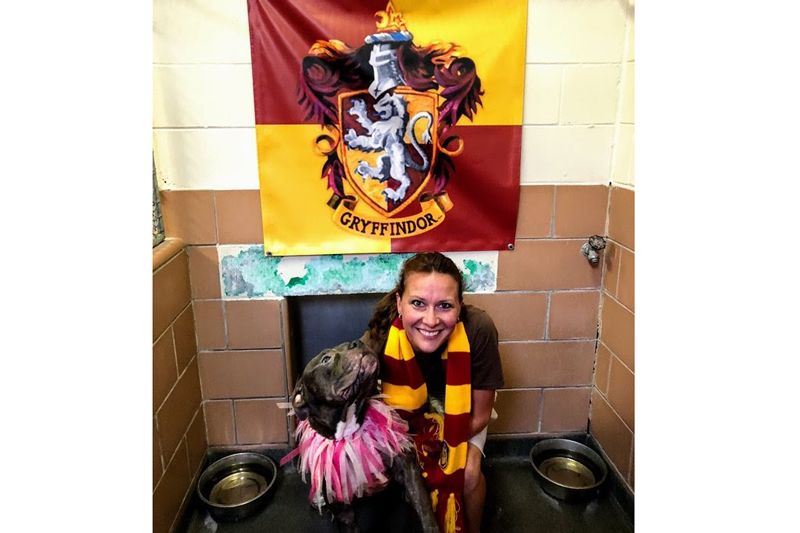
According to the definitive Pottermore quiz, Bardy is a Hufflepuff, although everybody says he’s a Gryffindor. Wynn Adams is a Ravenclaw.


